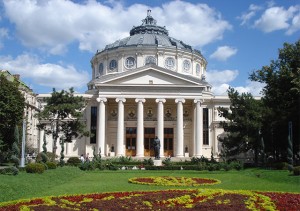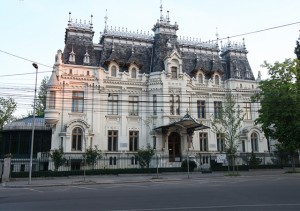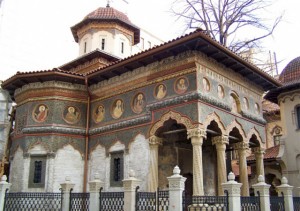Bucharest isn’t just a city populated by gray buildings and offices, even if their number is in a continuous growth. Among all the dull buildings and communist offices that surround the People’s House, there are many hidden gems that were built hundreds of years ago. When you’re visiting the Capital of Romania you mustn’t miss out on the chance of discovering these beautiful architectural tourist attractions.
The Romanian Athenaeum
The Romanian Athenaeum is one of the most beautiful and emblematic buildings in Bucharest. This was built from the money donated by the residents of Bucharest to the national campaign “Donate a leu for the Athenaeum”. And the people in Bucharest have been donating one leu for over 28 years until enough money were raised and this majestic building was constructed. Miraculously, it survived the bombings from 1944.
The CEC Palace
The foundation stone for the CEC Palace was placed with huge showiness in a sunny day on the 8th of June, in 1897. In the presence of the personality responsible for the way Bucharest changed its appearance during his reign- King Carol I- of his family and of many other personalities of those days- Dimitrie Sturza, Ion C. Bratianu and G. Cantacuzino. From an architectural point of view, the CEC Palace is known for its epic sizes, the exceptional finishes of its outside and its durability. The numerous earthquakes that shook the country from its grounds did not affect the structure of the CEC Palace.
Cretulescu Palace
The Cretulescu Palace is located near Cismigiu Park on the side from Stirbei Voda Street. It was built at the beginning of the XX century after the plans of the architect Petre Antonescu, in the French renaissance style, and in the inter-war period it hosted a Museum of Religious Art. From 1972, it is the headquarters of the UNESCO-CEPES, the European Center of Superior Education.
Stavropoleos Church
The Stavropoleos Church was built in 1724 at the initiative of the Greek monk Ioanichie in the suburb Ghiorma Banul, also called the Greek’s Suburb. Currently, the church is one of the most valuable monuments built in the Brancovenian style and it has been continuously maintained and restored. Some maintenance works have been made in 2003 to the patio and these have cost about 30,000 euros.
Palace Cantacuzino( The Enescu Museum)
It is one of the oldest buildings in Bucharest, nicely maintained and with a sumptuous architecture, baroque style, designed by the architect Ioan Berindey. The palace was built 100 years ago by Grigore Cantacuzino Nababul, which was first the mayor of Bucharest and afterwards prime minister.
Controceni Palace
King Carol I was the one who decided to build the palace, where once were the royal houses. It is the palace that he dedicated to his heir, Ferdinand I and to his wife, Maria. The construction works begun in 1893 and these were made after the designs of the French architect Paul Gottereau.
The Russian Church
This was built at the initiative of the Russian ambassador at that time, Mihail Nicolaevici Ghiers, between 1905 and 1907. The Czar Nicolae II financed the construction with 600,000 gold rubles, and the church was initially meant for the Slavic population in Bucharest. After passing for a couple of times from the Russian authority to the Romanian one and vice versa, in 1992 it was opened to students and professors from the University of Bucharest, being officially named the Student’s Church and getting the status of University Chapel.








